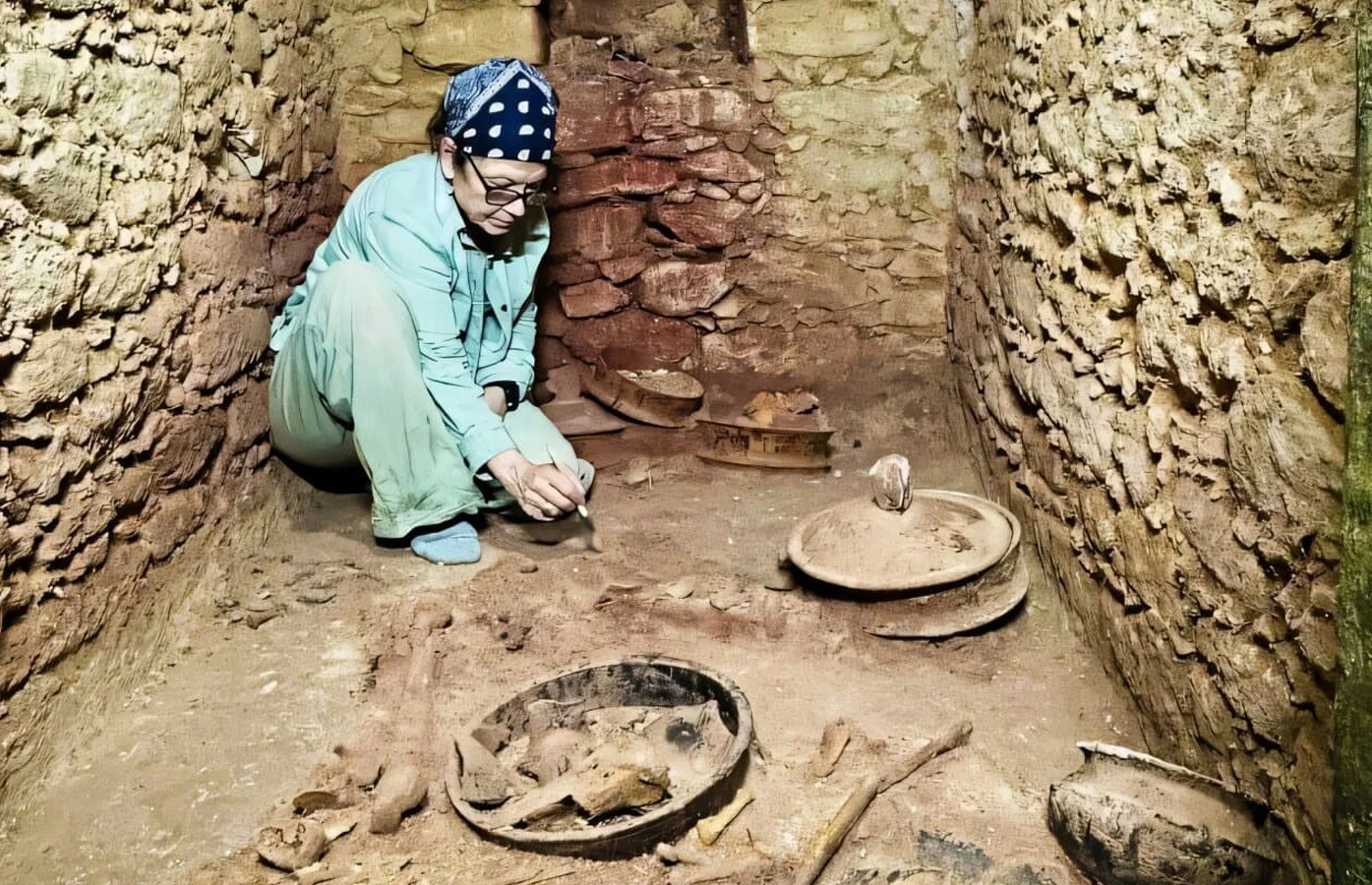After more than four decades of excavations at the Maya city of Caracol, University of Houston archaeologists Arlen and Diane Chase have uncovered the long-lost tomb of Te K’ab Chaak, the city’s founding ruler.
Caracol was a major Maya polity located in present-day Cayo District, Belize. First established around 1200 BC, the city remained occupied for nearly two millennia.
The extent of Caracol spanned approximately 200 square kilometres (77 square miles), making it significantly larger in size than modern-day Belize City.
This season’s excavation has been conducted in collaboration with Belize’s Institute of Archaeology, supported by the Alphawood Foundation, the University of Houston, the Geraldine and Emory Ford Foundation, and the KHR Family Fund.
Archaeologists uncovered the tomb of Te K’ab Chaak, the first ruler of Caracol who acceded to the throne in AD 331 in the Northeast Acropolis at the base of a family shrine.
Within the tomb are 11 ceramic vessels, carved bone tubes, jadeite jewellery, a mosaic jadeite mask, Pacific spondylus shells, and other perishable materials. One of the vessels depicts the king holding a spear and receiving offerings from supplicants, while another vessel portrays the image of Ek Chuah, the Maya god of traders.
“One question that has perplexed Maya archaeologists since the 1960s is whether a new political order was introduced to the Maya area by Mexicans from Teotihuacan,” said Diane Z. Chase.
“Maya carved stone monuments, hieroglyphic dates, iconography, and archaeological data all suggest that widespread pan-Mesoamerican connections occurred after an event in AD 378 referred to as ‘entrada,’” added Chase.
Radiocarbon dating places Te K’ab Chaak’s tomb and two other burials in the same Northeast Acropolis complex around AD 350 AD – decades before the traditionally recognized “entrada” event.
One cremation burial, placed in the plaza centre and rich with central Mexican artefacts such as green obsidian blades and atlatl points, suggests the buried individual may have been a Maya noble who adopted Teotihuacan customs, possibly even a diplomatic envoy.
A third tomb, that of a woman adorned with hematite and marine shell jewellery, adds to the narrative of elite burials during this formative period. Together, these finds underscore extensive Mesoamerican connections and sophisticated ritual exchanges.
Header Image Credit : UOH
Sources : University of Houston







